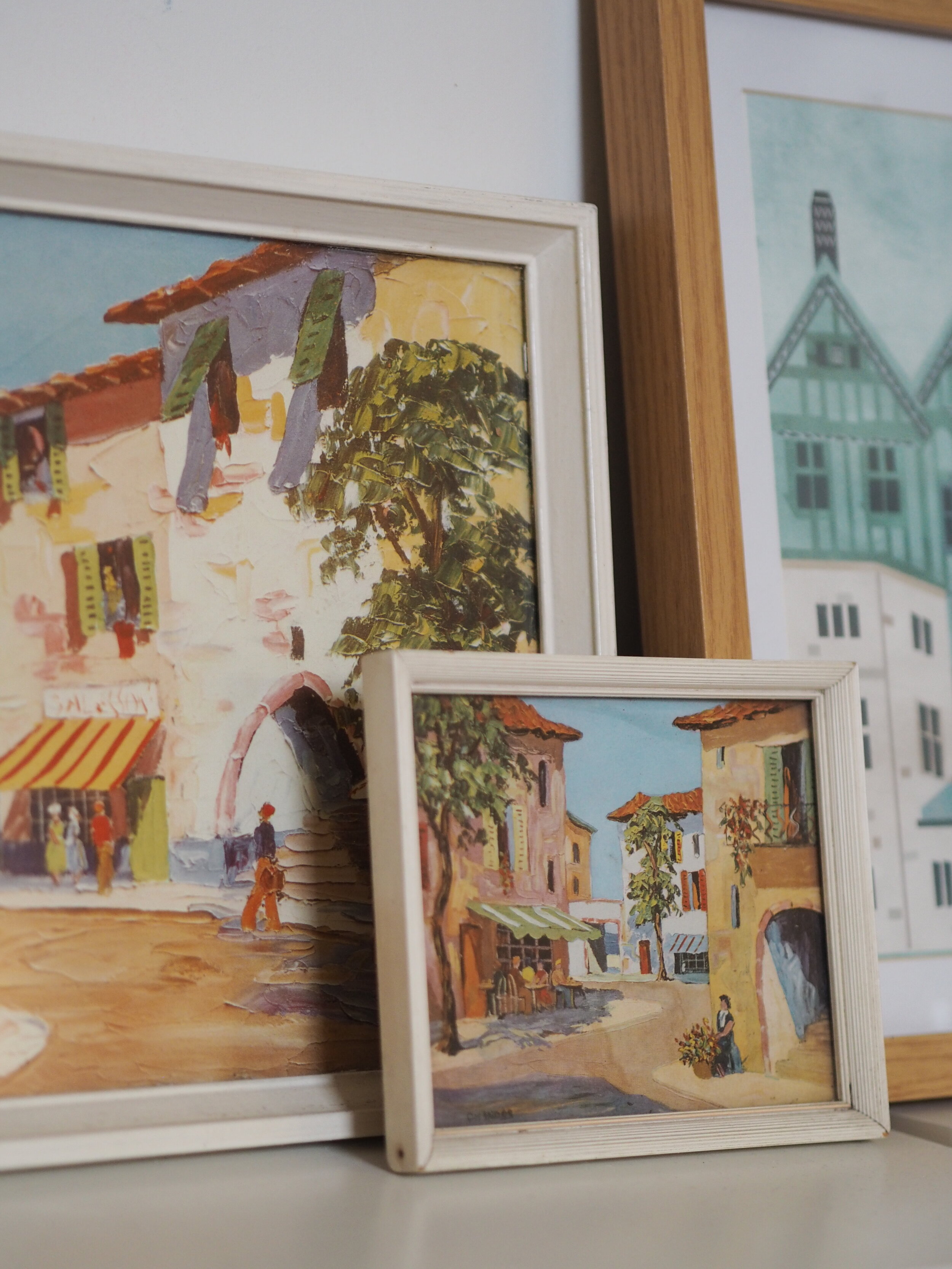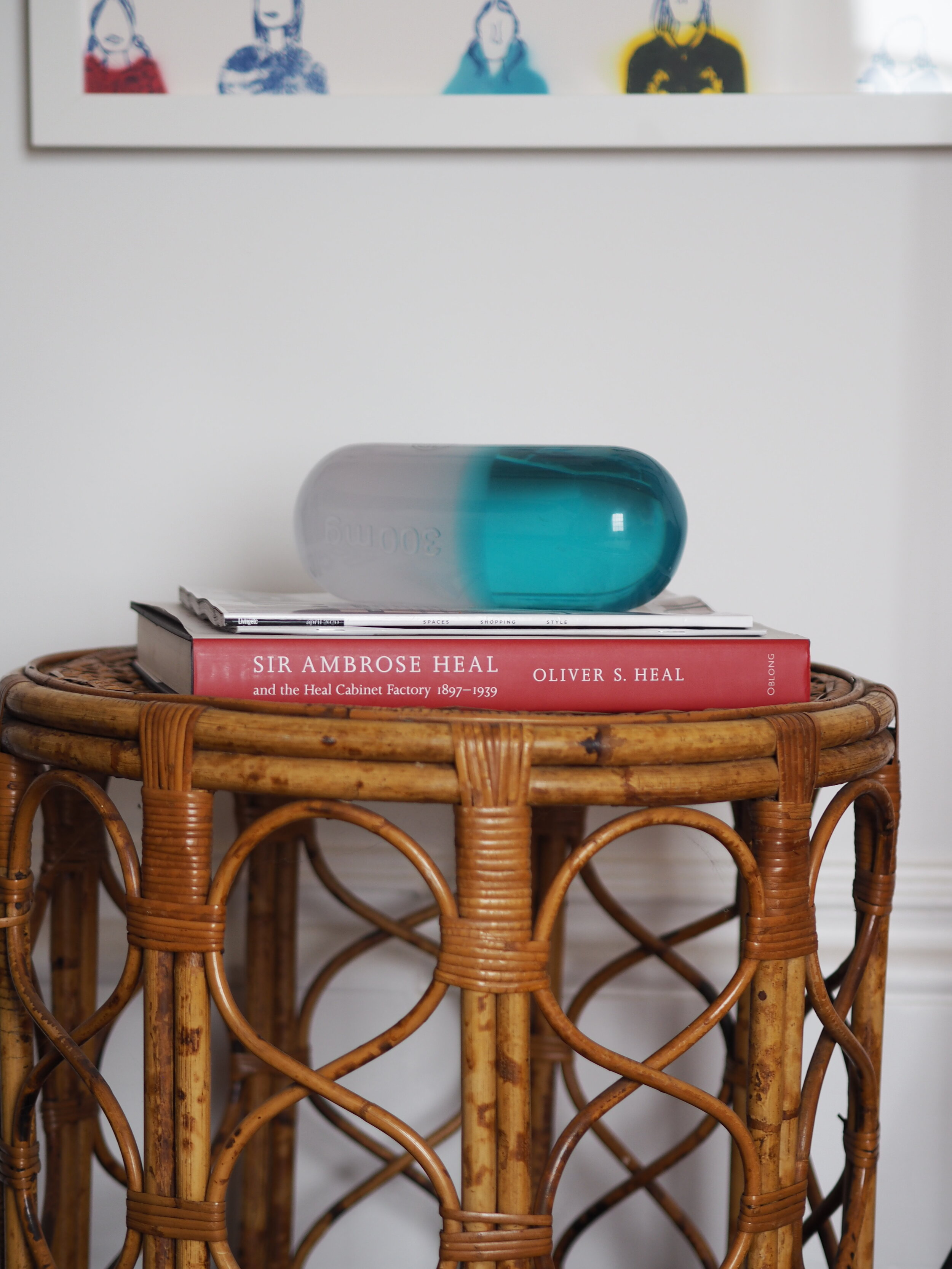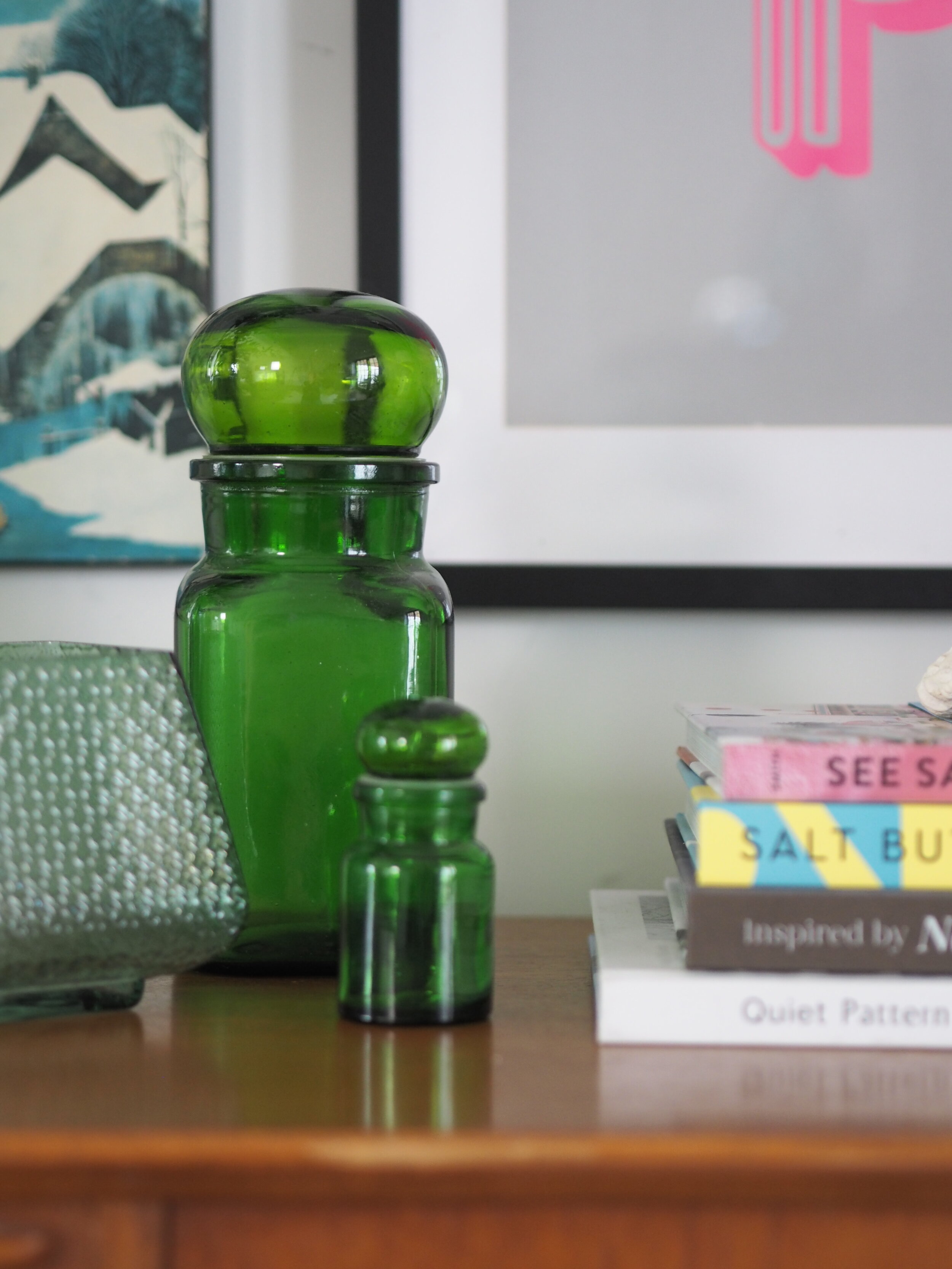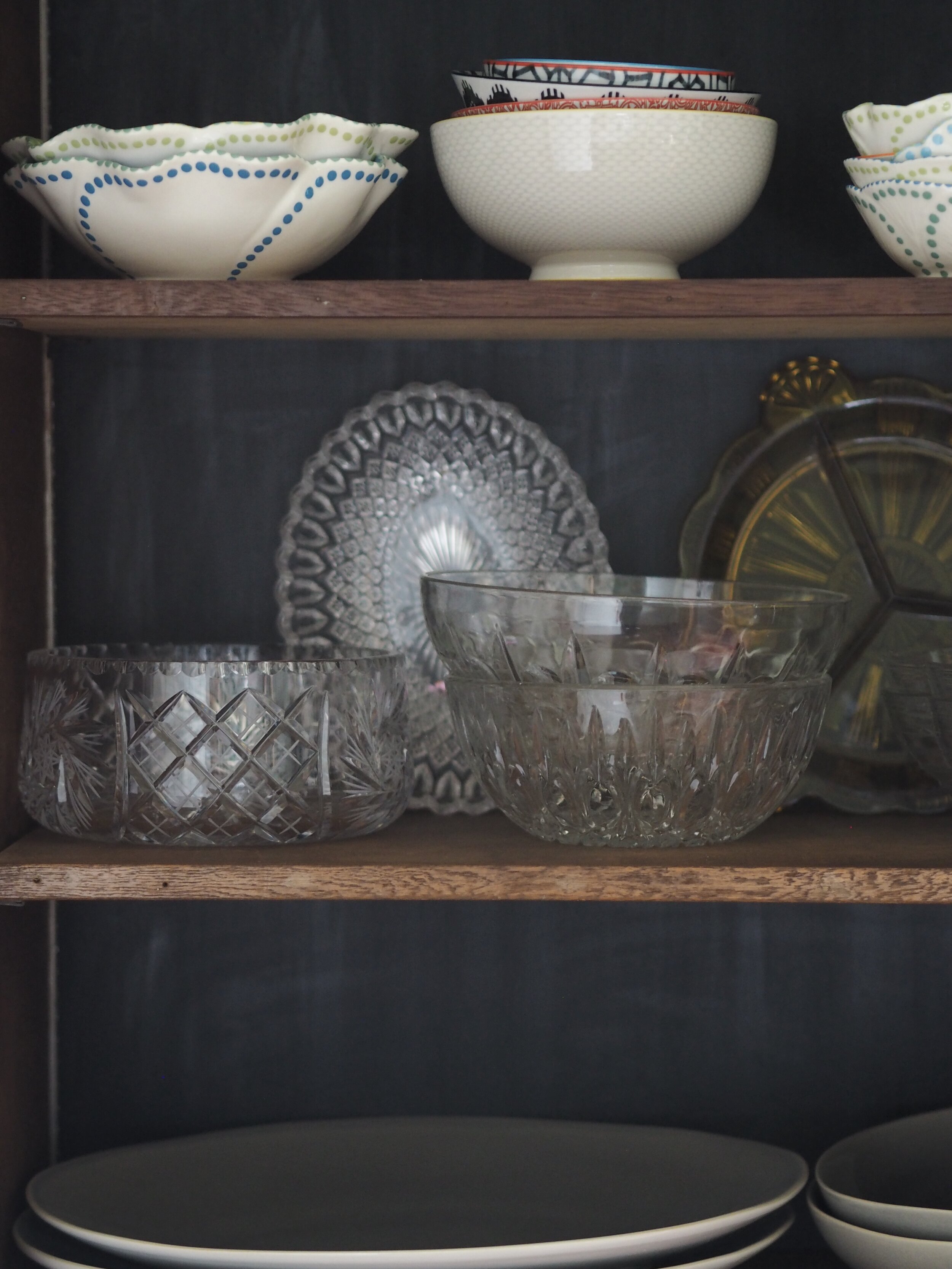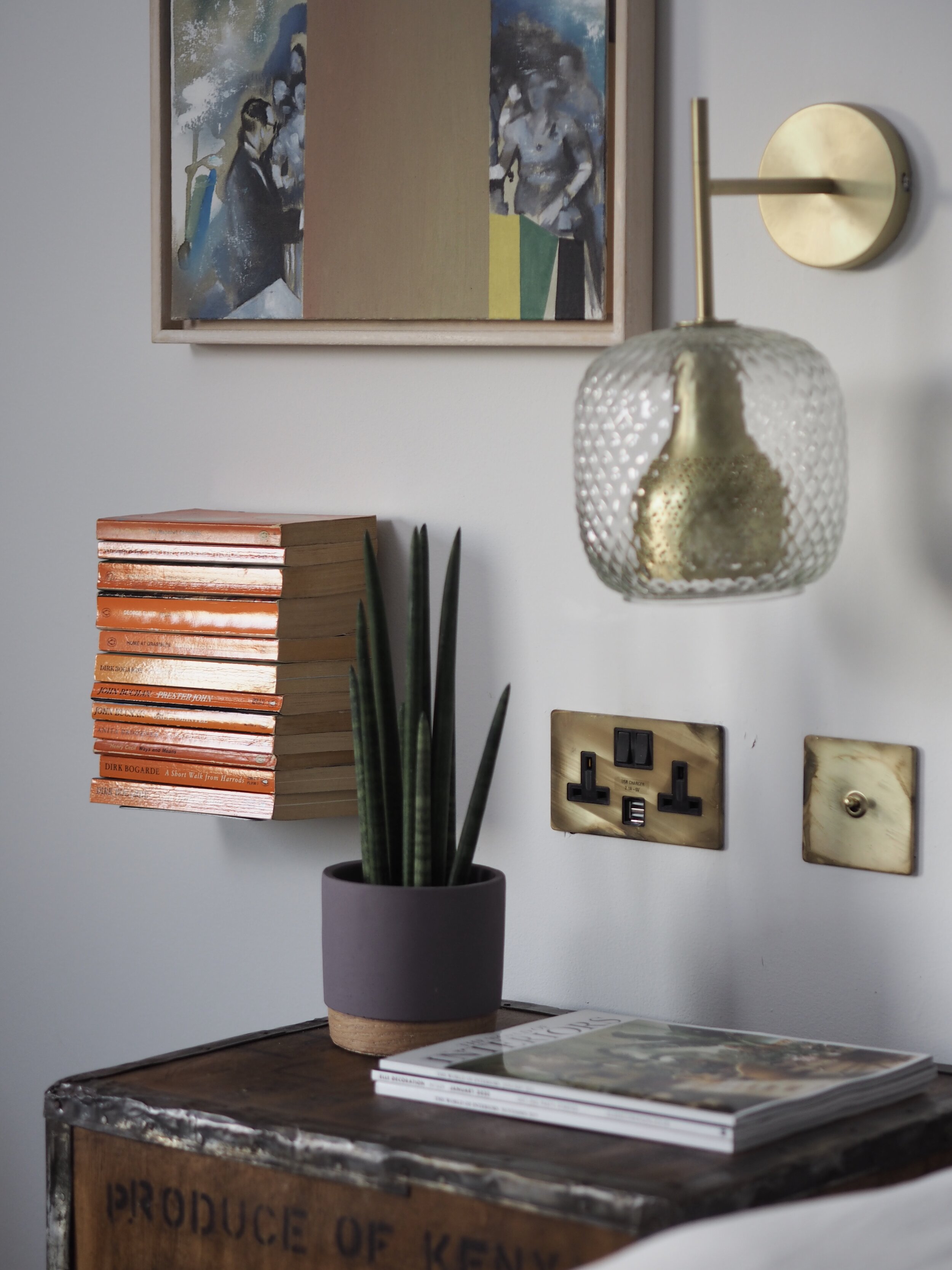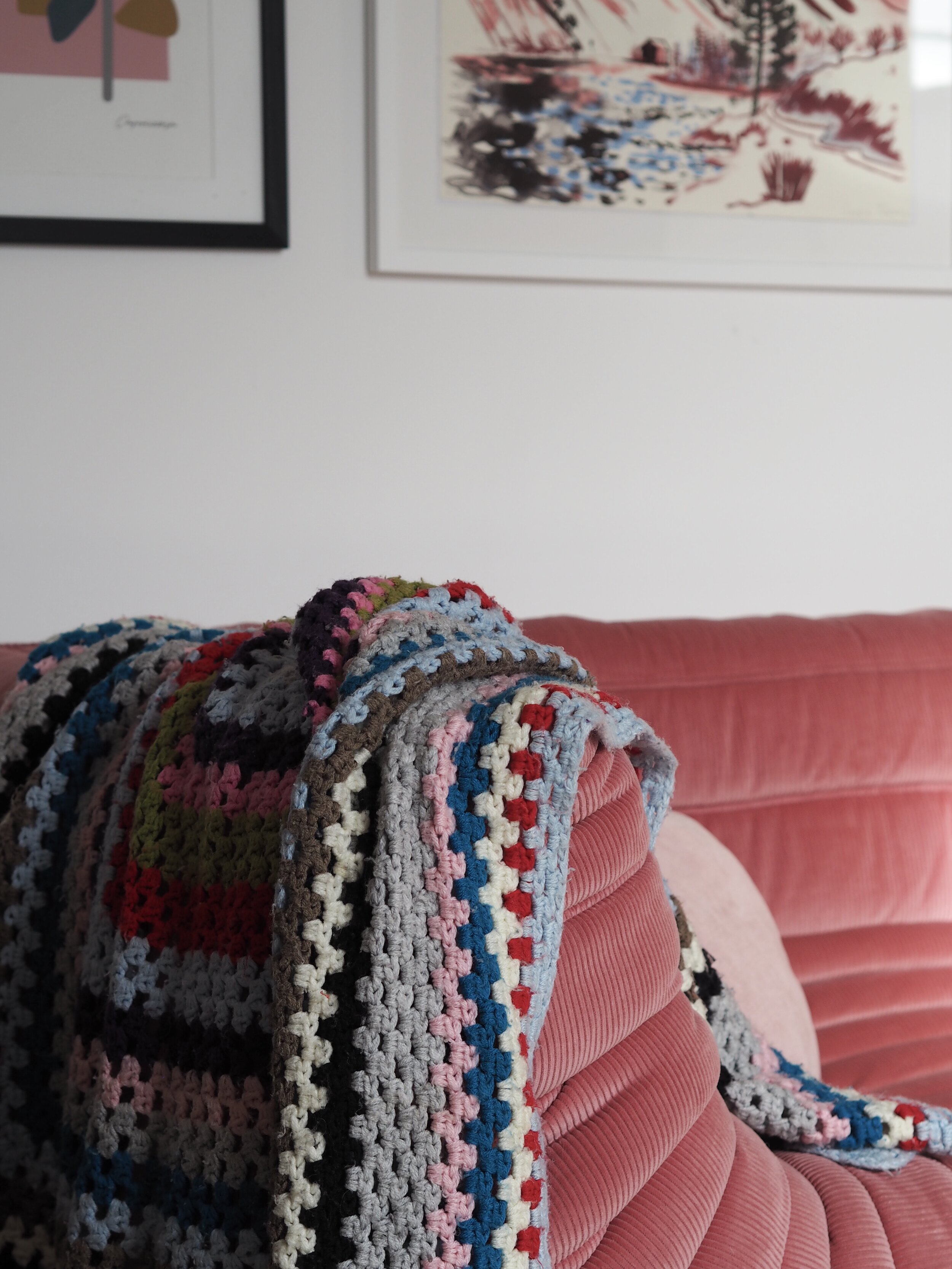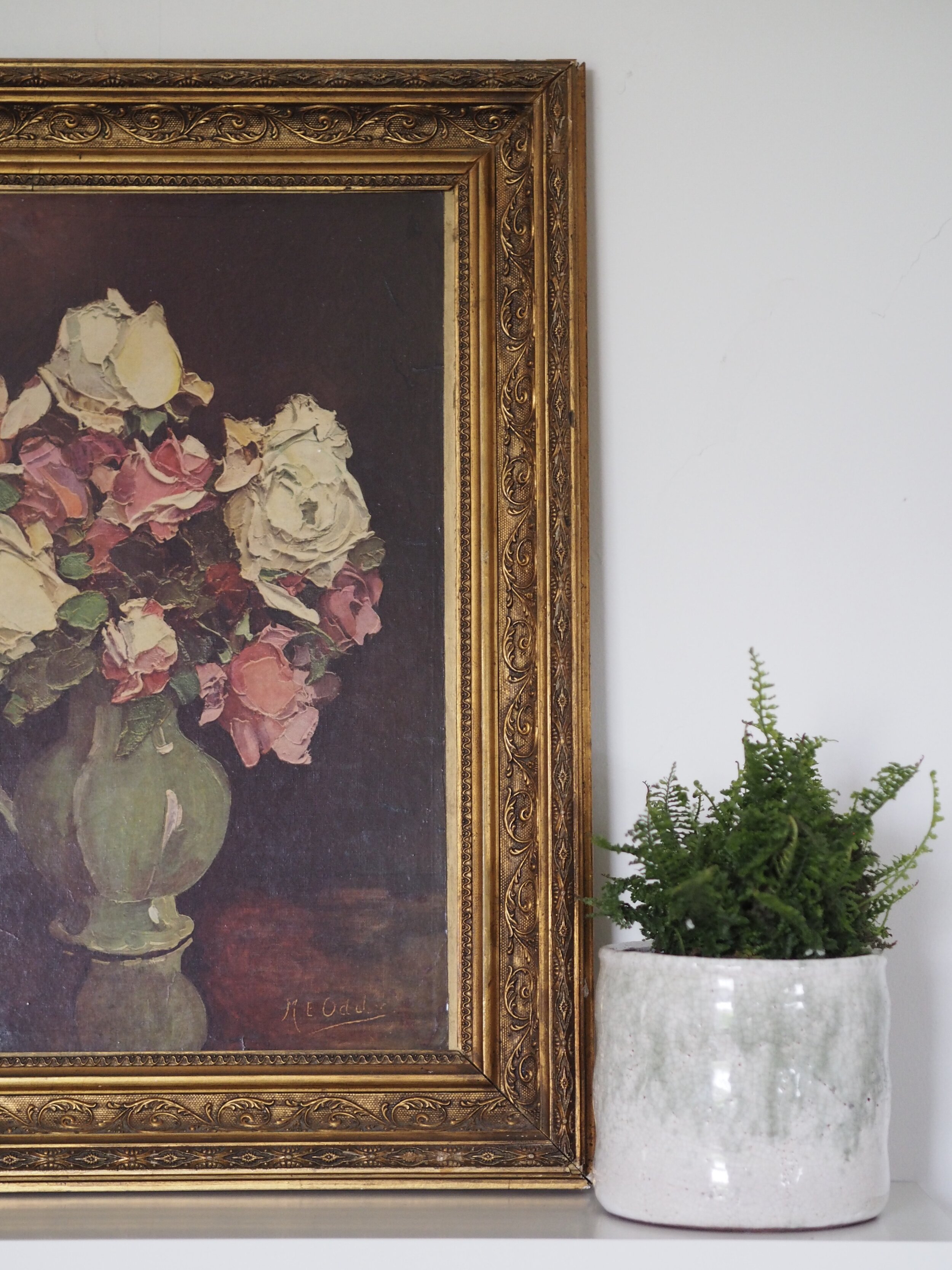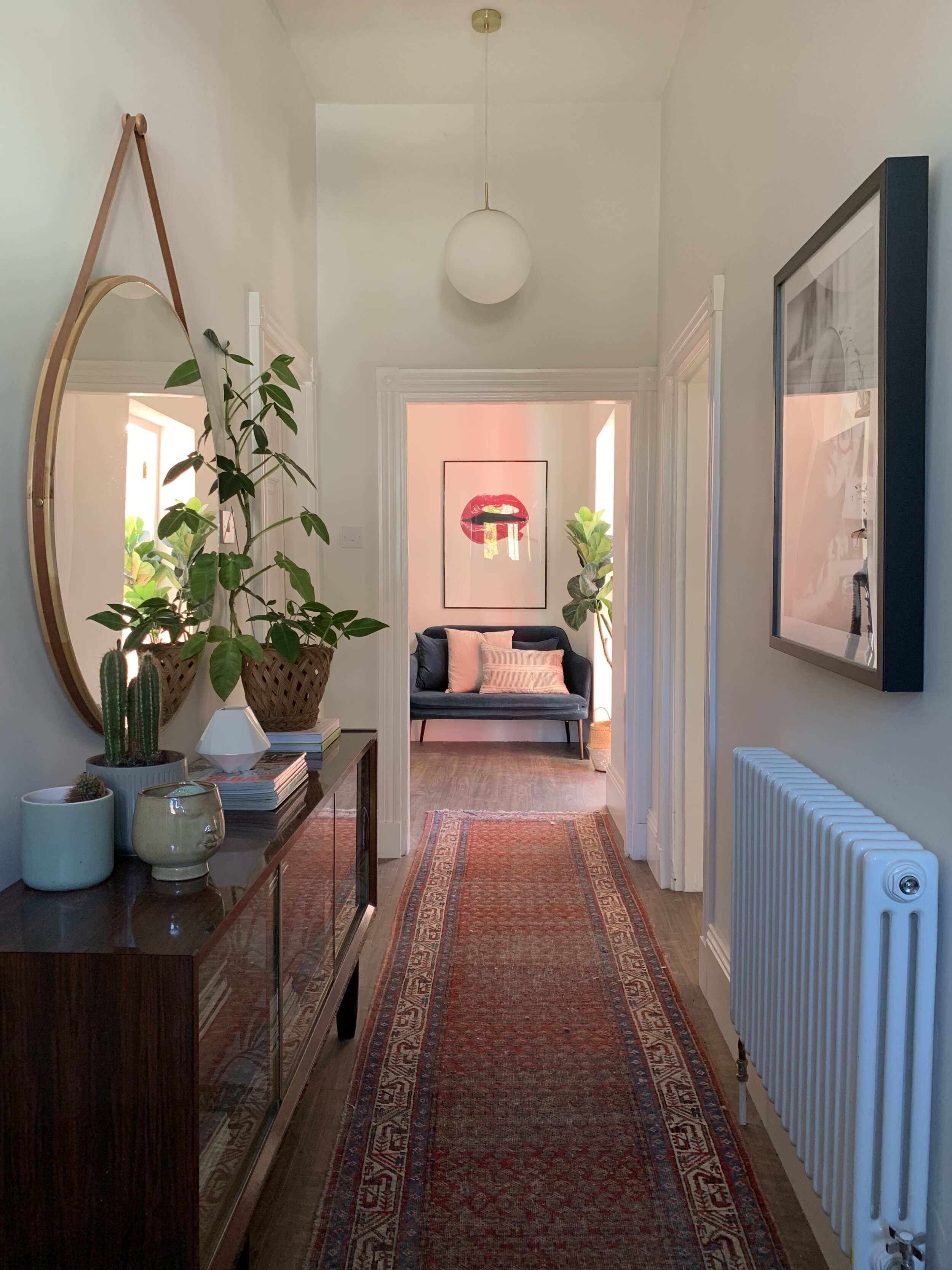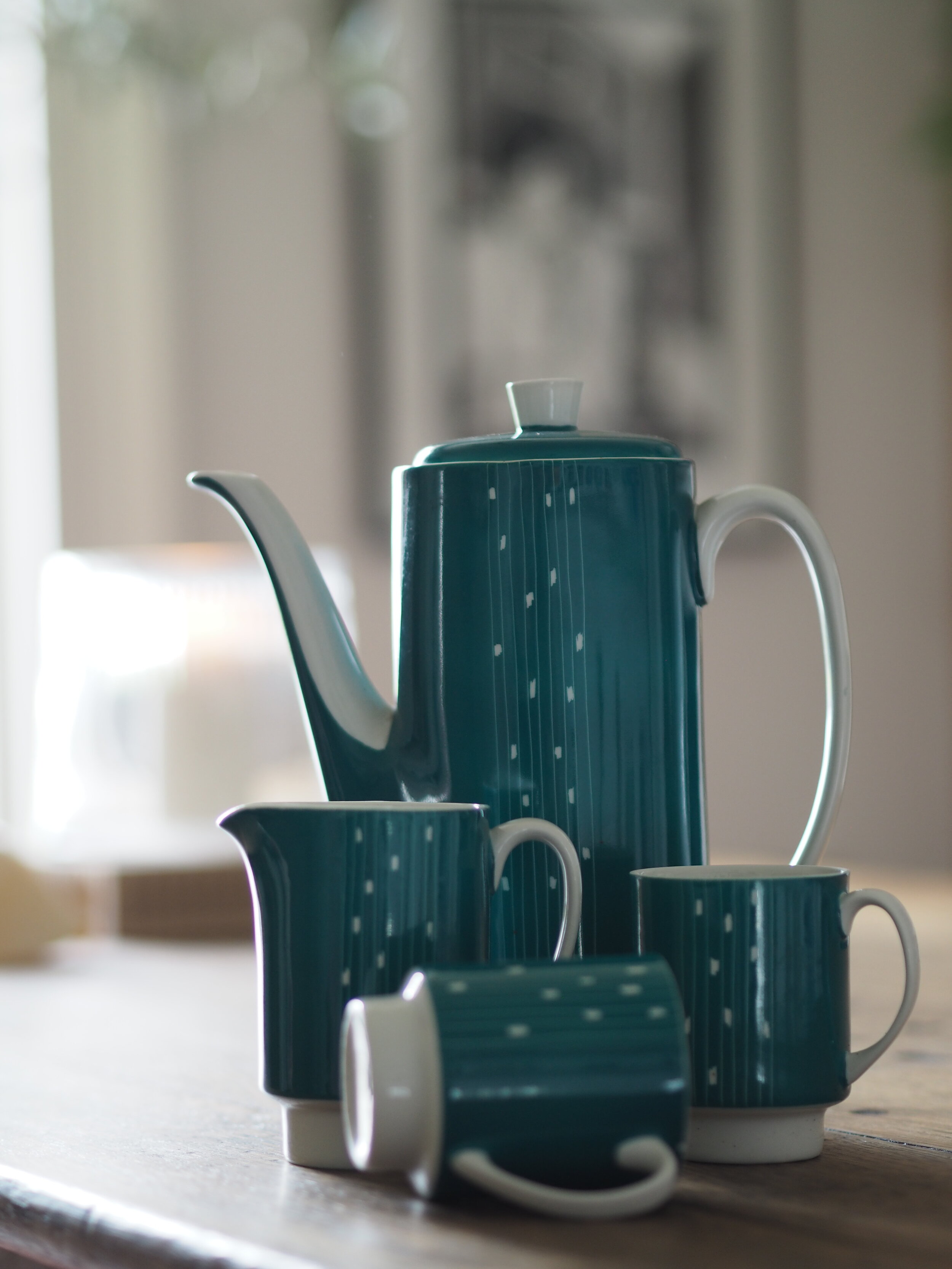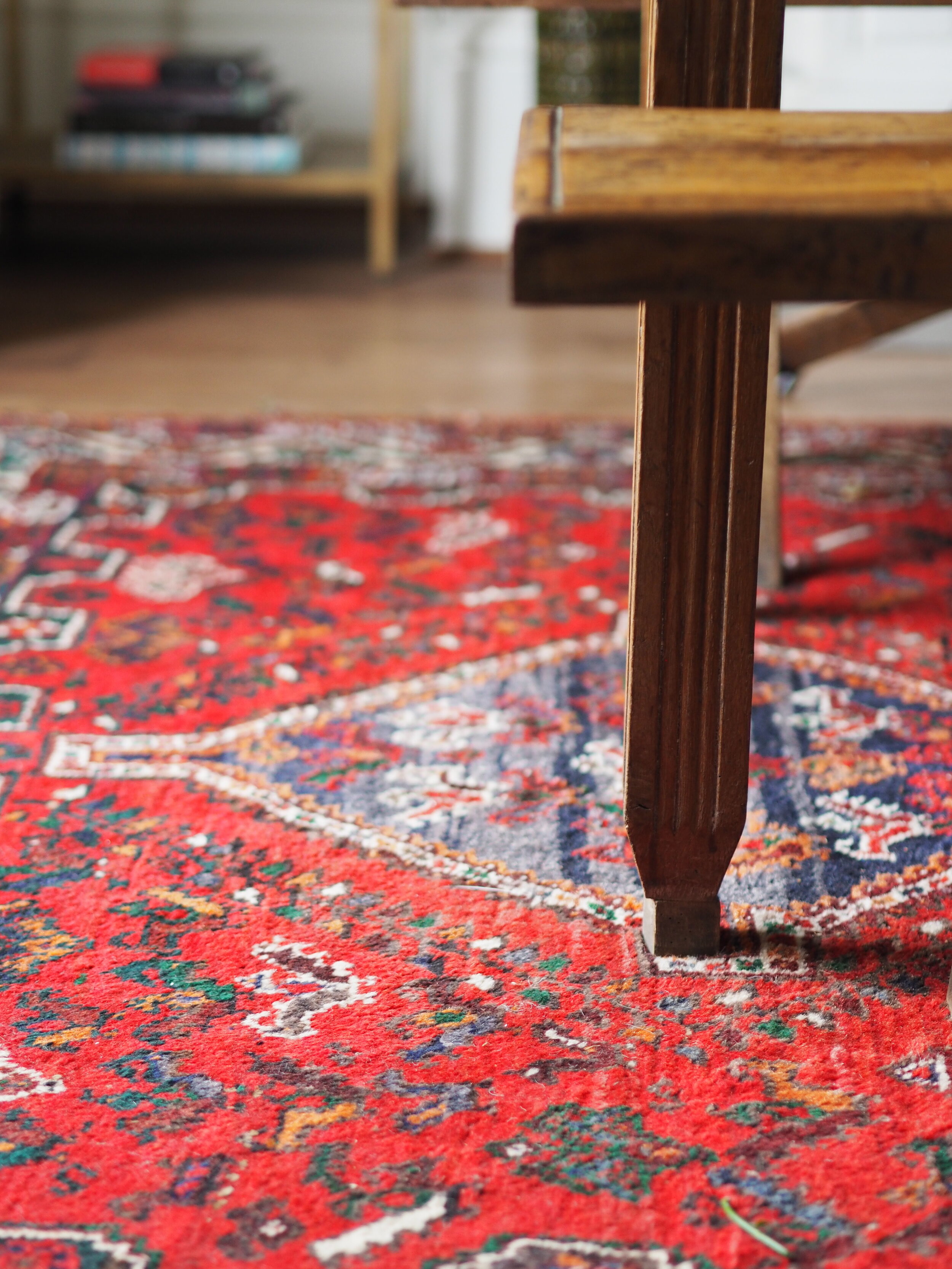Buying Vintage: How To Charity Shop & What To Look For
This week I visited the charity shops with my friend Karen. It had been five months since we had last embarked on our perfect day out, trawling the streets Acomb with plastic bags at the ready. To say I was excited about this outing is the biggest understatement since Joe announced on our first date that he had a passion for home security (a fact later confirmed when I realised that he slept with a baseball bat under the bed and a guitar propped against the bedroom door handle). Karen and I LOVE a charity shop. She is the Thelma to my Louise, the Cagney to my Lacey, the Romy to my Michelle in our quest for the perfect grimy thrifted find. Neither Joe, nor my children, are fans of my charity shop purchases, it has to be said. Often, they have looked on appalled as I bring in yet another piece of coloured glass, floral plate or dusty book destined never to be read but that look beautiful (it’s styling, sweetie). They simply do not get the joy that I feel when I cram the back of the car full of preloved tea sets and kitsch white framed artworks discoloured with years of cigarette fumes. In contrast, my children’s bedrooms are an homage to IKEA and modern day High Street. I once tried to sneak a vintage bamboo chair into Ella’s room and she was completely traumatised - even now, she still talks about the time I tried to ‘force her to have old stuff’. Honestly.
This weeks charity shop finds on my outing with Karen to Acomb.
Prior to lockdown, I made weekly visits to my local charity and second hand store favourites, scouring the shelves for discarded fabulousness and undiscovered beauty, dragging it all home, cleaning it up (in some cases with a significant amount of bleach and air freshener) and displaying it’s gloriousness on my shelves. There is simply NOTHING that I love more than bringing something that has been cast aside, unloved, back to life. There are several reasons for this. First of all, what you find on these second hand trawls is unique to you. You’re choosing to have it in your home because you love it, not because you’ve seen it on Instagram and you want to follow a trend, or because a magazine tells you it’s a must have. Secondly, you’re saving an item from landfill; you’re recycling and repurposing what is a perfectly good and often beautifully made item. And finally, you’re buying from either a small business or a charity so you’re giving back. There’s reason to feel quietly smug on all sides, let’s face it.
But for me, the BEST thing about adding things to my home that have a history (albeit slightly pungent occasionally) is the way that they work in my space. Mixing old favourites with High Street buys, vintage finds with modern; it’s the juxtaposition of the styles that makes me really, truly happy. My favourite purchases in my home have been sourced second hand - there isn’t a room in our house that isn’t endowed with an item at least 70 years old (I’m talking thrift finds, not people. Joe and I aren’t that old yet ffs).
Mick the builder after he’d bashed out 250 years worth of old fireplaces.
Our home is Georgian, built in 1759 and often I wonder what has gone on in the rooms in years past. Who knows? Or more to the point, do we WANT to know? Imagine all those corsets being ripped off in my very own bedroom. Good God. Anyway, at Christmas, we knocked out a reproduction Art Deco fireplace in our sitting room to make way for a log burner. Mick the builder and his son, George, came in to the do the job and attacked it with a sledgehammer, revealing not just one but three fireplaces which had been installed over the previous hundreds of years. Eventually, they took it back to what would have been the original space - an open fire with a brick arch above - but not before they had found old bricks with footprints in them from when the builders used to actually make the bricks on site in moulds. I LOVE history. Bloody fascinating.
Whenever I launch myself on a thrifting expedition, my Instagram stories are bombarded with messages about the treasure that I find. There’s no doubt about it - and this makes me very happy - sourcing and buying second hand is most definitely for the cool kids. After living for many years in a ‘more is more’ society, we are now, finally, accepting that actually, buying less but buying well and with resourcefulness is much better for both our pockets and the planet. But what to look for? What to focus on when you walk through the door and are accosted with a battlement of vintage china and musty looking accessories? I’ve written about this before on my blog but it’s always worth reiterating the importance of seeking out the good stuff. Here are my top must haves.
Textiles
Not always the most popular section of the charity shop due to it’s musty ambiance, the textile section is well worth a look. Often a nirvana of old 80's duvet covers, net curtains and granny blankets, there’s gold in them charity shop hills and it just needs a bit of a rummage. You never know what you will find but look out for tablecloths, vintage hand crocheted folk blankets (my personal favourite - I have an entire basket of them next to the sofa) and bed covers. Plus, of course, it’s worth looking just for the fabrics which can be multi tasked into something else entirely. There’s nothing that looks better than a huge vintage blanket used as a picnic rug. View with fresh eyes what could easily be discarded.
Ceramics
From mid-century West German pottery to Sylvac plant pots, if you’re looking for ceramics then you’re in the right place. I’ve picked up countless ceramics when on a trawl - often I’ll aim for similarly colour toned pieces to create a display (anything to start a collection which gives me an excuse to keep going). Glug water vases (the curved fish) are fun to source, come in plenty of sizes and look great en masse. Always check the bases for makers marks too - you never know what you’ll find.
Tableware
On our visit this week, I returned with a full dinner set for six people in a vintage oriental design called Willow (many of you will know this make - I received hundreds of messages that you’d grown up with similar). However, you don’t need a set to make it work - individual vintage plates are often found all on their lonesome and collecting them to make your own unique dining set is often far more fun. Layer them up, mix and match to create a truly individual place setting. Tea sets are another good buy - I have three. Obviously I don’t need three, but they’re always so beautiful I can’t bear to leave them behind.
Vintage Books
It’s not possible to have too many books. They’re an easy vintage buy but such a good one and a perfect example of repurposing and reusing. Stack them, style them, colour code them – hell, even read them. Scour the shelves for old hardbacks and pretty spines that are perfect for styling up your bookshelves. Seek out old Penguin books for tonal heaven - I have orange, green and blue in my house and they’re very aesthetically pleasing. Vintage lifestyle and cookery books are another favourite of mine - 1970’s fondue recipe with accompanying vol au vents? Yes please.
Art
My visit to St Leonards Charity Shop this week heralded two boxes of gold frames at a pound a go which I promptly storied, making my Direct Message box go wild. It’s not just about the prints - you can find the most amazing frames when thrifting. Vintage prints are an excellent juxtaposition to modern art and typography when you’re planning a gallery wall - search for floral oils, old photographs and mid century art. Don’t stop there either. Scour the shelves for old maps - local charity shops are likely to have, well, local maps which can be framed whilst creating that personal link to your walls if it’s your own neighbourhood.
Natural Materials
Bamboo, wicker and rattan furniture may have been around for years, but it’s eternally cool and translates brilliantly into modern living spaces. Some may say it’s made a recent come back but for many of us, it’s never gone away. It’s charity shop gold and you can pick up anything from magazine racks, mirrors, basket ware, chairs and side tables for a bargain price. Team it with contrasting textures and fabrics to great effect and work it in every room for maximum VFM. It’s also ideal for multi tasking outdoors during the summer months.
Glassware
I have enough vintage glassware in my house to host a wedding. I’ve been collecting it for years - cut crystal whiskey glasses, etched wine glasses, tiny glasses for post dinner coffee, water tumblers. You name it, I have it in vintage glass form. I’m always amazed how it is discarded in abundance on the charity shop shelves yet can be repurposed in your home to great effect. Trifle bowls, cake stands, glass serving dishes - my display cabinet is full of them and I use them all regularly. How much nicer is a table laid for a dinner party with a selection of vintage glassware to the side of each plate? Much nicer, that’s how much. Stock up on it.
Vintage Rugs
Finally, don’t rule out second hand rugs. I have three rugs in my home that I bought in the charity shop and they’re all adored by me, plus they’re the ones that I’m asked the most about on my Instagram stories. Runners are a classic charity shop purchase, mostly discarded by previous owners due to flattened pile but anyone who is anyone knows that that makes them EVEN BETTER. A faded vintage Persian runner is full of character and history with years of use in it. Don’t be put off if they’re a bit grubby or smell strange. Shake N Vac can bring the freshness back or go a step further and get it professionally cleaned.
So those are my top charity shop bargain hunting thrift winning tips for buying vintage. There is so much fun to be had searching for the perfect thrifted find and it never fails to make me feel happy. If you’re reading my blog, I’m pretty sure you are as obsessed with this subject as I and if you’re not, then quite frankly, you should be. Recycling, repurposing and reusing what we have is the only way to go and when you can double whammy it with a bit of giving back, either by purchasing or donating your own unwanted items, then you’ve nailed it. Charity shops are THE BOMB.



